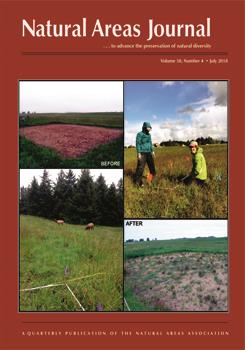The horticultural trade is a well-known source of nonnative invasive plant species, yet urban and suburban developments are routinely planted with these species, creating high invasion pressure on adjacent natural areas. Understanding the spread of nonnative species and predicting invasions is critical for the management of natural habitats. Here, we examine the similarities in nonnative plant community composition between a remnant natural habitat at Fire Island National Seashore and the surrounding residential communities to assess the impact of nonnative invasive horticultural species on the natural area. In the natural area, we identified 16 locally listed invasive plant species. In residential areas we identified 21 locally listed invasive species. Of 162 properties surveyed, 144 appeared to be occupied and maintained by residents; 18 appeared unmaintained or abandoned. Unmaintained properties had significantly more invasive species than maintained properties. Nonnative species composition between the natural and residential areas was not significantly different. In the natural area, distance from suburban edge, native species richness, and soil moisture were important drivers of invasion. We show that in this particular natural area, invasive plants have not invaded farther than 25 m into the forest, indicating the strong role of edge effects in invasions. Additionally, we show that unmaintained properties in the residential areas may be the primary source of invasives to natural area. Homeowner education on the impacts of invasive species and active management of the nonnative invasive species in the unmaintained properties may be important for preventing further invasions to the forest.
How to translate text using browser tools
1 July 2018
Does Suburban Horticulture Influence Plant Invasions in a Remnant Natural Area?
Elena S. Tartaglia,
Myla F.J. Aronson,
Jordan Raphael
ACCESS THE FULL ARTICLE

Natural Areas Journal
Vol. 38 • No. 4
July 2018
Vol. 38 • No. 4
July 2018
edge effects
Fire Island National Seashore
homogenization
invasive plants
wildland-urban interface




